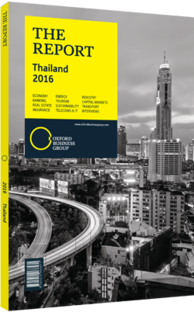Local transport links open opportunities in Thailand's construction sector
The country’s mass transit capabilities have grown by leaps and bounds over the past decade as the rollout of a network of road and rail projects has eased the gridlock in Bangkok. The increasingly broad reach and efficiency of the operating rail system has not only proven effective in easing travel for residents and visitors to the city and its outlying areas, but has also opened up a host of new property hotspots along the new transport lines. As this network continues to extend ever deeper into the outskirts, real estate prices likewise continue to spike around major infrastructure works either already under way or set to begin construction in the near future.
New Space
“When the government starts to invest in infrastructure projects, that will open up new land for property firms to develop residential projects. This will challenge property firms to invest in the new locations following the new mass-transit route from Bangkok to the suburbs and [nearby provinces],” Thongma Vijitpongpun, president and CEO of Pruksa Real Estate, told local daily The Nation in December 2015. According to Thongma, these projects will be the main factor driving the real estate sector average annual growth rate to 5-10% for the 2016-20 period.
In all, these massive infrastructure outlays are designed to ensure Thailand’s status as an ASEAN Economic Community transport hub and will include 10 new mass-transit rail routes, in addition to double-tracking existing railways and building new motorways. This plan was originally reaffirmed in 2012, when the Mass Rapid Transit Authority of Thailand announced plans to develop six additional lines for Bangkok’s existing urban railway system. These new lines are expected to cover a combined distance of at least 200 km and will require a cumulative investment of some BT600bn ($18.1bn) by 2020. The Thai government backed the plan further in 2013, when it committed BT470bn ($14.1bn) of the government’s BT2trn ($60.2bn) infrastructure spending plan to the development of Bangkok’s urban railway system. Specifically, the expenditure is targeted at the Red, Blue, Green, Pink, Orange, Purple and Yellow lines, as well as expansion of the airport rail link.
Rising Popularity
A survey released in December 2015 by Plus Property, the agency arm of Thai property developer Sansiri, confirmed these sentiments. The study focused on demand in areas along the future Dark Green and Light Green transit lines, and revealed that three-quarters of those surveyed preferred to own condos (not residential property) within the vicinity of Bangkok Mass Transit System (BTS Skytrain) stations. Feedback further indicated that although more potential buyers are expressing interest in developments situated around the city’s outer fringes, they prefer locations in the vicinity of BTS stations. Most respondents would choose to live around 9-10 km or 30 minutes from their office, while the ideal distance from a BTS station would be less than 500 metres, meaning that locations near mass transit routes are clearly desirable.
Largely as a result of this demand, property prices along the routes of the more developed transit projects are beginning to spike. The Nation reported in January 2016 that land prices around BTS Skytrain and Metropolitan Rapid Transit (MRT) metro routes already in operation roughly doubled since the projects opened, while the price of land around the Purple Line route from Bang Sue to Bang Yai has risen by 20-30% since construction started on the route five years ago. The most developed of these is the MRT system’s new 23-km elevated Purple line, which will link Bangkok’s Bang Sue and Nonthaburi Province’s Bang Yai starting in August 2016. The next phase, the green line extension, is slated for completion by the end of 2017. Following this, the Orange Line ( Thailand Cultural Centre-Min Buri), Pink Line (Kae Rai-Min Buri) and Yellow Line (Lat Phrao and Samrong) are all expected to open bidding before the end of 2016.
You have reached the limit of premium articles you can view for free.
Choose from the options below to purchase print or digital editions of our Reports. You can also purchase a website subscription giving you unlimited access to all of our Reports online for 12 months.
If you have already purchased this Report or have a website subscription, please login to continue.

